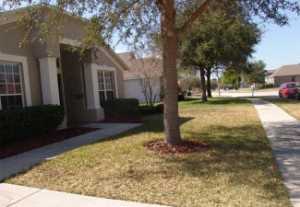 Winter’s rough for Lawn Care Indianapolis, no doubt about it. Cold, snowy, blech. Animals hibernate, people disappear inside their heated houses, and once-green lawns become submerged underneath a thick layer of snow.
Winter’s rough for Lawn Care Indianapolis, no doubt about it. Cold, snowy, blech. Animals hibernate, people disappear inside their heated houses, and once-green lawns become submerged underneath a thick layer of snow.
Just because all that life hides away out of sight doesn’t mean it’s gone, obviously. Baby deer and baseball games return in full force every spring.
But grass… well, your grass isn’t always so lucky.
Lawns suffer in the winter when people forget there’s green stuff underneath all that white stuff. All kinds of common winter activities can harm your yard and leave dead patches of soil where grass once grew. Plows dig up the lawn close to the road and snow blowers and shovels tear into the ground near driveways and walking paths. Playing children jump in the snow, compacting hidden soil and killing hidden grass. If your dog pees in one specific spot all winter lawn, the nitrogen-heavy urine builds up in the ground and burns away the lawn in that spot.
Yeah, winter can be rough on Indianapolis lawn care. That’s where overseeding comes in.
Overseeding’s a fancy word for filling in a lawn with new grass seed. Most experts agree that fall’s the best time for overseeding so that the germinating grass seed doesn’t have to compete with the weeds popping up in the bright spring sun. You can overseed in the spring, however, and you should if you don’t want to stare at those dead patches of soil all summer long. Overseeding means no pre-emergent weed control, though – those herbicides kill grass seeds as effectively as they kill weed seeds.
The key to spring overseeding is to do it early, “immediately after the ground thaws” early. That way the young shoots have time to mature before they endure the scorching summer sun. The time is now!
Start by cutting the existing grass as short as possible. Seriously, take it down to an inch if you can. Short grass lets more sunlight and water reach sprouting seeds than longer grass does.
Next, you’ll want to aerate the yard to get rid of any winter compaction and make the soil more receptive to the new seed. Most people don’t have an aerator – you can rent one for the day at most rental businesses and some of the larger garden supply stores.
Now rake the heck out of that grass! Settle for nothing less than the complete and utter eradication of every bit of thatch buildup in your yard – you only want bare soil and grass left in your wake. Raking also helps to score the soil and get it ready to accept the forthcoming seeds. A specialty dethatching rake can speed up the process. Your spring Lawn Care Indianapolis is almost complete!
Finally – time for the grass. Read the label on the grass seed  to determine how much to apply per square foot. You can eyeball it and sow the seed by hand if you’re just overseeding the bare patches in a lawn, but consider using a spreader for its accuracy if you’re filling in a thinned lawn.
to determine how much to apply per square foot. You can eyeball it and sow the seed by hand if you’re just overseeding the bare patches in a lawn, but consider using a spreader for its accuracy if you’re filling in a thinned lawn.
Fertilizer helps young grass grow strong and healthy, but too much of it stresses the growing lawn. Cover the seed with an even layer of a slow-release nitrogen lawn fertilizer, applied at half of its normal application rate. Water the ground until the fertilizer works its way completely into the soil, leaving partially buried grass seed behind on the surface.
Growing grass is thirsty grass. Keep the seeds and their surrounding soil nice and moist until the new blades reach a couple of inches tall. You don’t want the seeds to dry out, but be careful; adding too much water drowns and kills the seeds.
Mow the grass and start treating it normally after it reaches two or three inches, and fertilize the lawn a second time a month or so after overseeding, this time using a full-strength application with quick-release nitrogen.
That’s it! An afternoon of work and a couple minutes of watering a day is all it takes to cure your lawn’s winter blues and enjoy lush, green grass all summer long.

Leave a Reply